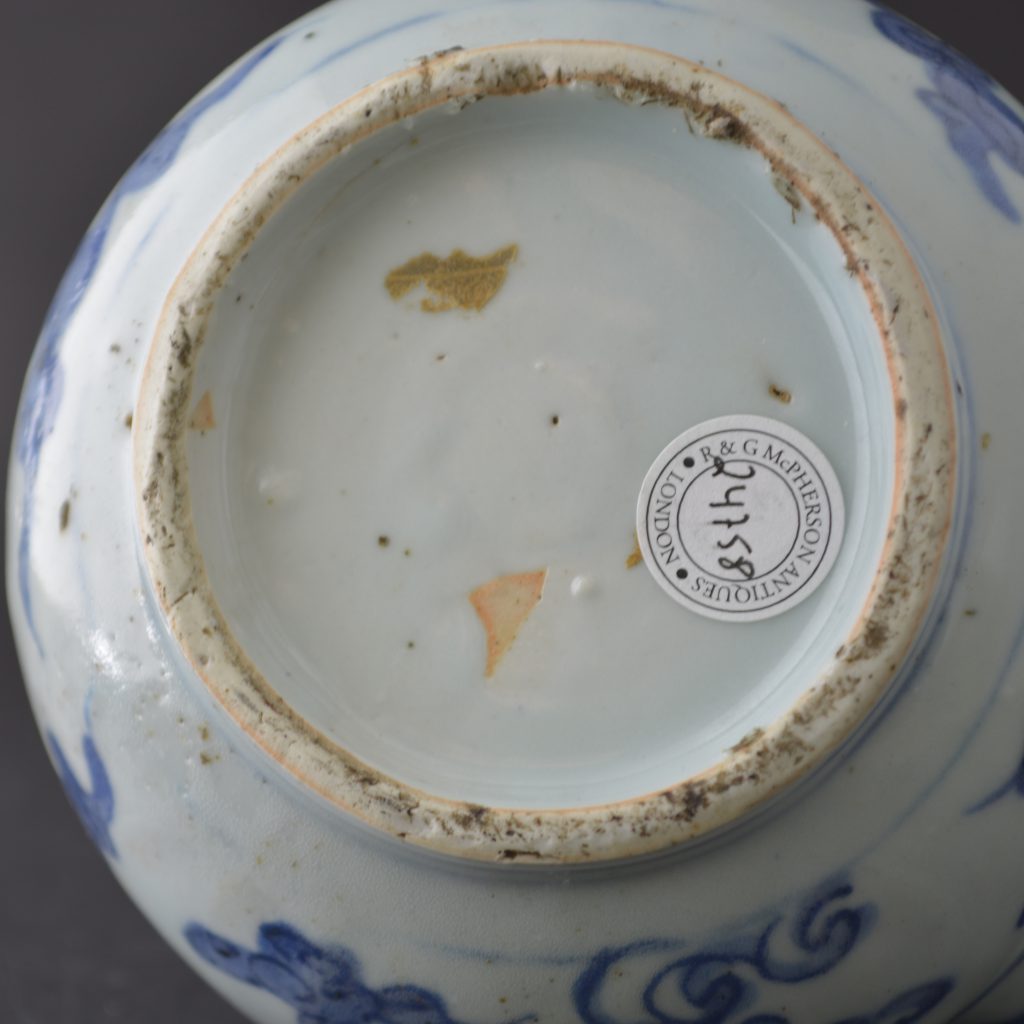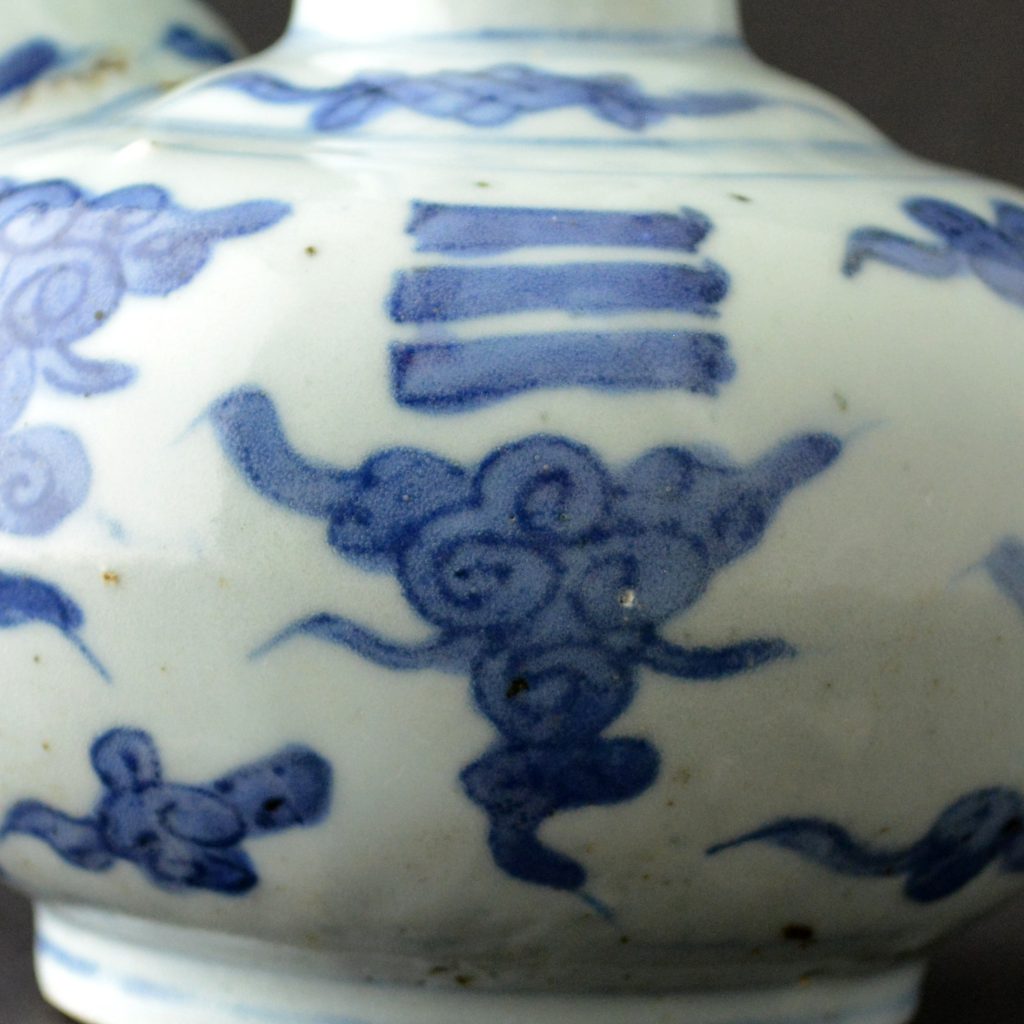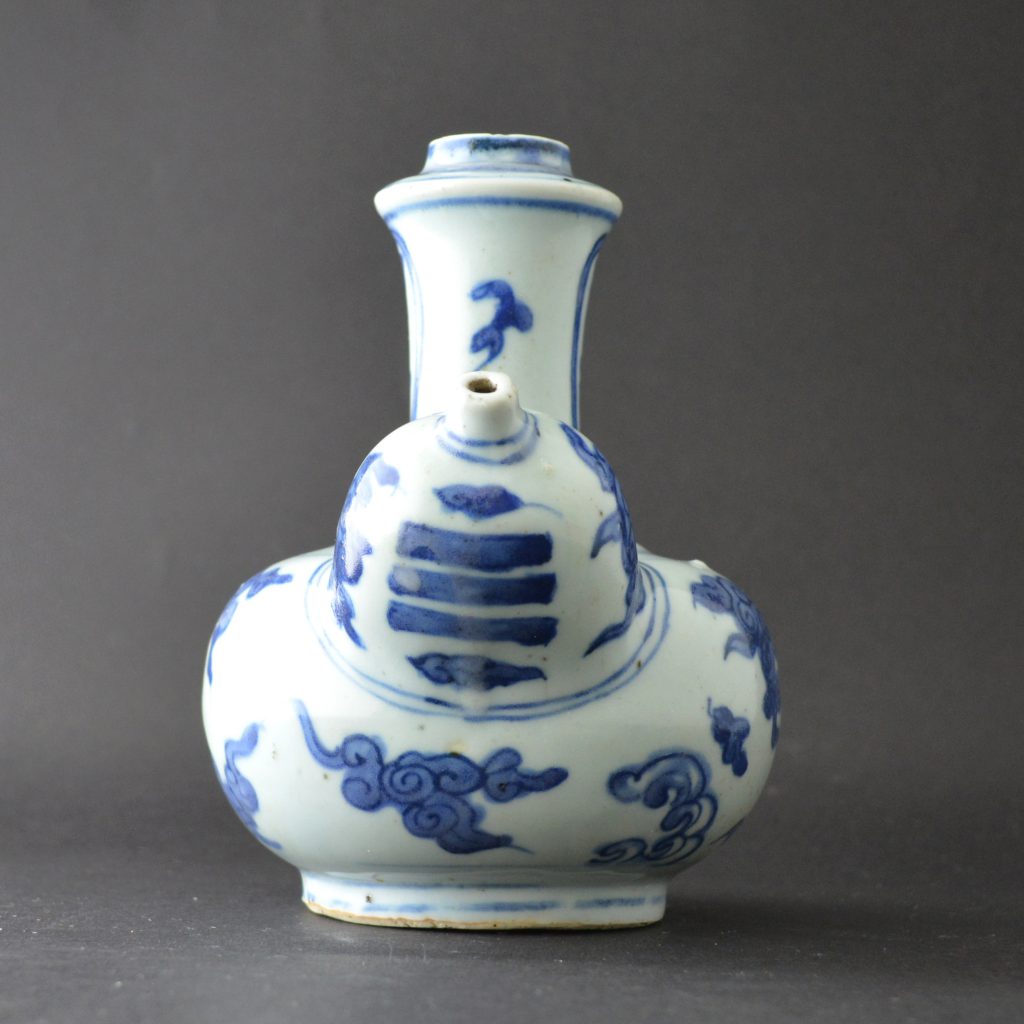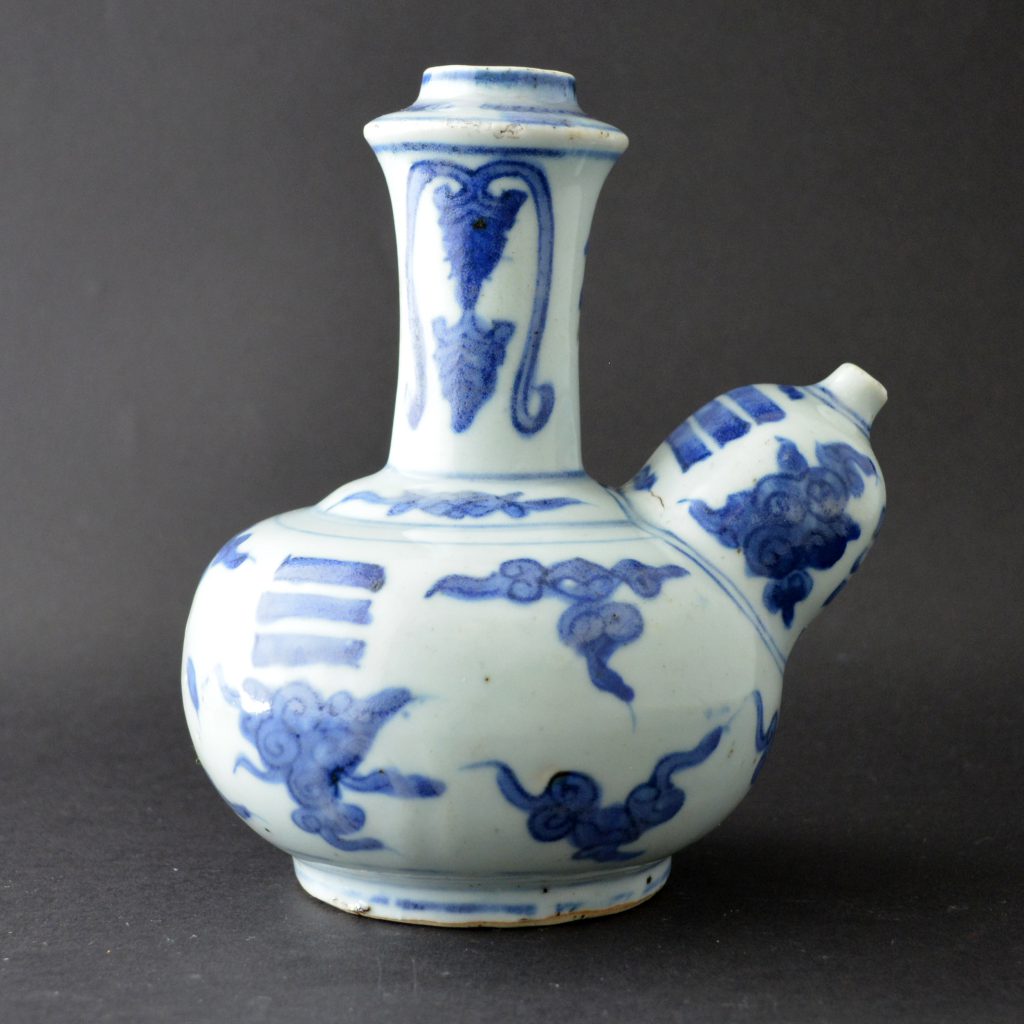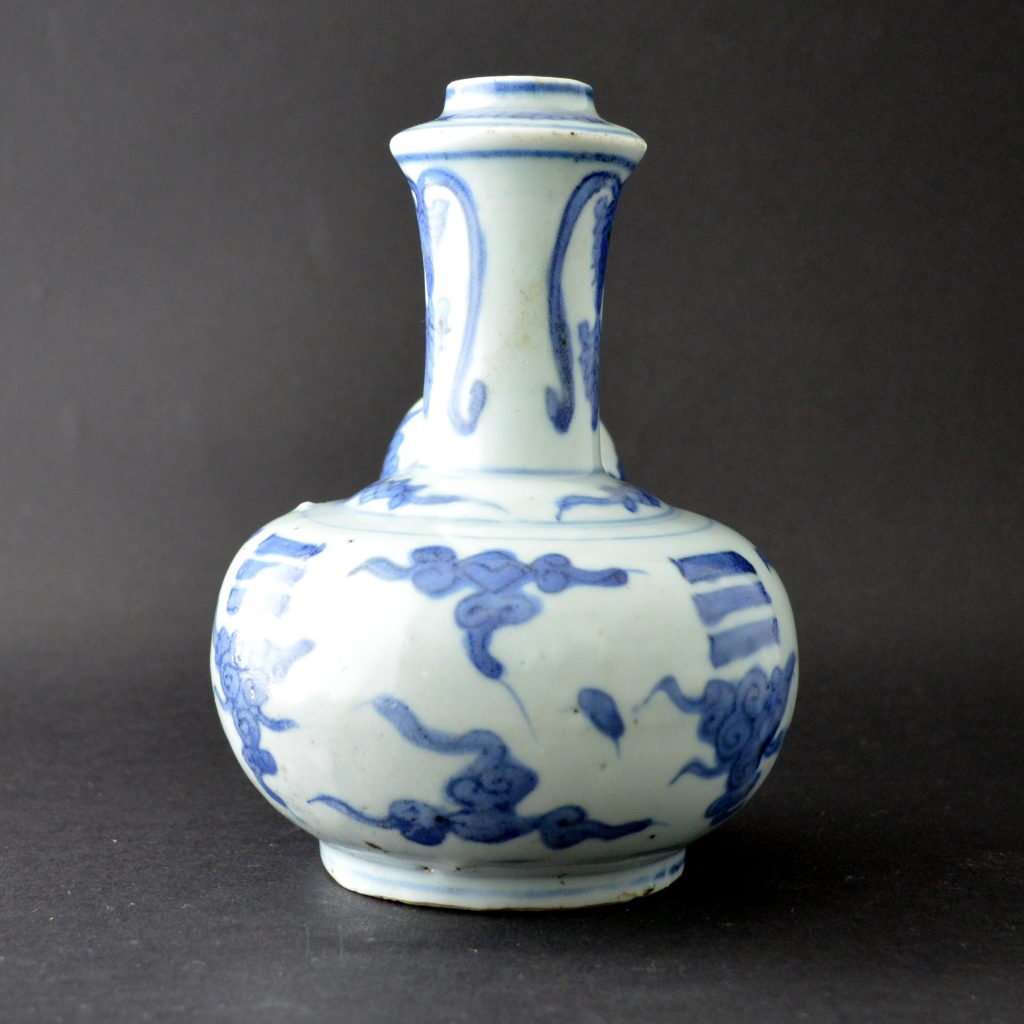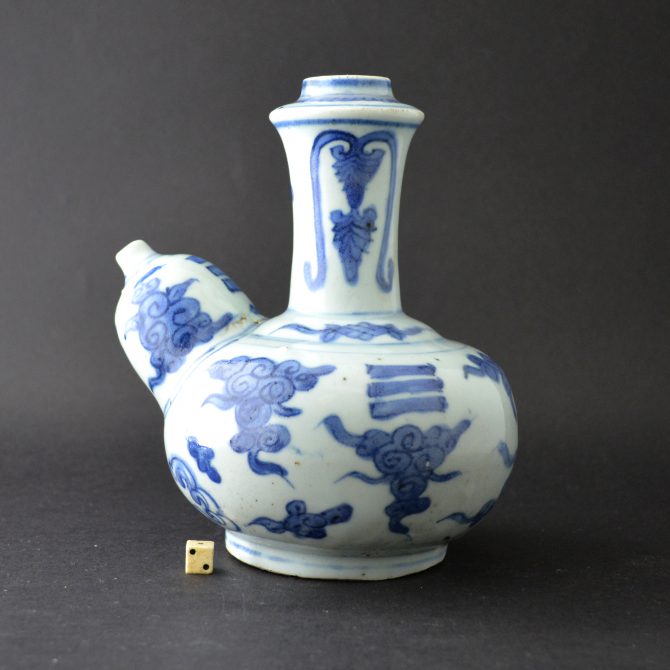
A Ming Blue and White Porcelain Kendi, Late Wanli or Tianqi c.1600 – 1627.
A small Blue and White Ming porcelain kendi, late Wanli or Tianqi period c.1600-1627. Decorated with a repeated Trigram ☰ Qián meaning Heaven among stylised heavenly clouds.
- Condition
- In excellent condition, some very minor fritting. A firing crack where the spout joins the main body of the vessel.
- Size
- Height : 16 cm (6 1/4 inches)
- Provenance
- N/A
- Stock number
- 24758
Information
Kendi :
The kendi is defined as a vessel with a round body, tall neck, mouth, a spout on the shoulder and a flat base. The two openings make the kendi suitable for both pouring and drinking liquids. It is distinguished from other pouring vessels such as a jug or flagon by the absence of a handle. The presence of a spout on the shoulder places it in the broader typology of a spouted vessel. To drink from a kendi, grasp the neck with one hand ; place the other on the base for support if desired, hold the vessel away from the body, point the spout towards the mouth and slowly tilt it to start the water flowing. As the lips never touch the spout, the kendi is a hygienic and convenient communal drinking vessel.
The Eight Trigrams / Ba Gua :
The Ba Gua literally eight symbols are eight diagrams used in Taoist cosmology to represent the fundamental principles of reality, seen as a range of eight interrelated concepts. Each consists of three lines, each either `broken` or `unbroken`, representing a yin line or a yang line, respectively. Due to their tripartite structure, they are often referred to as Trigrams in English. The Eight Trigrams are ☰ Qián Heaven, ☱ Duì Lake/Marsh, ☲ Lí Fire, ☳ Zhèn Thunder, ☴ Xùn Wind, ☵ Kǎn Water, ☶ Gèn Mountain, ☷ Kūn Earth.
